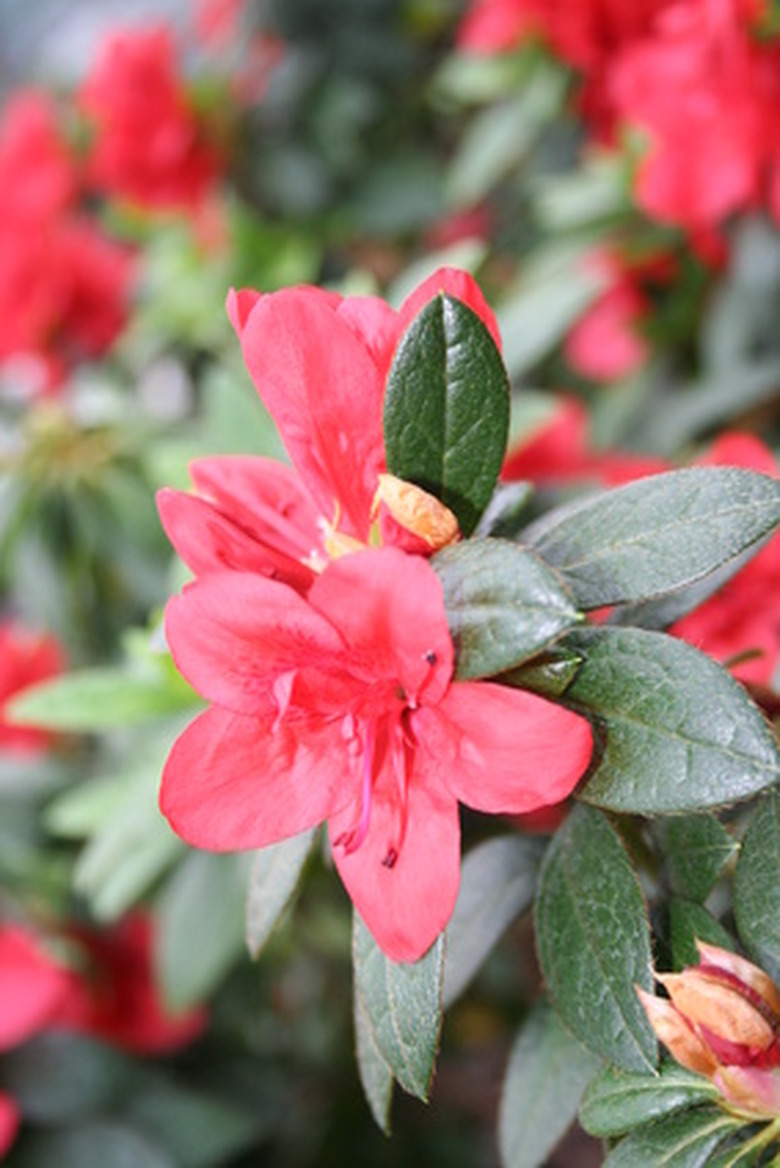Shrub Leaf Identification
Shrubs are a large group of plants. A basic understanding of leaf characteristics can aid you in identifying an unknown shrub in your garden. By learning some of the basic terminology and accessing available online resources you can likely identifying most plants on your own. If you get stuck, take a leaf from your shrub to your local nursery or nearby university extension office.
Leaf Arrangement
Begin your shrub identification by studying leaf arrangement. Shrub leaves grow in one of three basic configurations. Opposite leaves grow directly opposite one another on the stem. Honeysuckle leaves grow in an opposite arrangement. Alternate leaves grow in a staggered, or alternating fashion, and whorled leaves grow around the stem as if on a ring. There are few shrubs with whorled leaves, narrowing your plant choice for identification. Some species of fuchsia have whorled leaves in clusters of three to five, though most have opposite leaves.
- Shrubs are a large group of plants.
- Shrub leaves grow in one of three basic configurations.
Simple and Compound Arrangements
Shrubs' leaves are further identified by whether they grow in a simple or compound habit. All leaves grow on slender stems called petioles. Simple leaves grow singularly from a petiole. Compound leaves, on the other hand, have multiple leaflets that grow from a single petiole. Compound leaves can be further defined by whether they grow from a single point on from several points on a petiole.
Leaf Shape
Shrub leaves come in a variety of shapes. Many leaves are oval in shape, but whether they are narrow ovals, wide ovals, or a shape in between will assist you in narrowing your search for identification. Some leaves may be more circular than oval. Additionally, noting the shape of both the tip of the leaf and the base of leaf are important.
- Shrubs' leaves are further identified by whether they grow in a simple or compound habit.
- Compound leaves can be further defined by whether they grow from a single point on from several points on a petiole.
Leaf Margins
The edge of leaves are called margins. Shrub leaf margins can be smooth or lobed. Butterfly bushes have opposite leaves with smooth margins. Some margins are serrated, sometimes called toothed. Osmanthus are evergreen shrubs with finely serrated margins. Serrated margins can also be doubly serrated.
Leaf Texture
Many leaves have small hairs on them. Note whether the hairs are on the upper or under side of the leaf. Also observe whether the hairs are dense on the leaf, or sparse. Some hairs will also be sticky. Some species of viburnum, for example, have leaves with dense, star-shaped hairs.
- The edge of leaves are called margins.
- Many leaves have small hairs on them.
